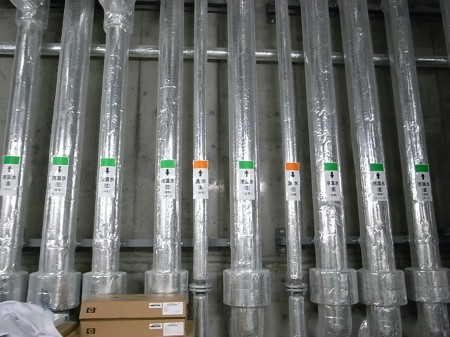12月1日(第7週)大岡龍三先生紹介December 1, 2011 Talk by prof. Ryozo Ooka
公開日:2011年11月28日
投稿者:sakaguchi
大岡龍三 Ooka, Ryozo
東京大学生産技術研究所教授
大岡先生は、21 KOMCEEの地下水・地下熱を利用した冷暖房システム構築を担当されました。
略歴
京都大学 大学(工学部 建築学科) 1989 (卒業)
京都大学 修士(工学研究科) 1991 (修了)
東京大学 博士(工学系研究科 建築学)
博士(工学) 東京大学
1993-1998 東京大学生産技術研究所 助手
1998-2000 福井大学工学部 講師
2000-2001 福井大学工学部 助教授
2001-2006 東京大学生産技術研究所 助教授
2007-2009 東京大学生産技術研究所 准教授
2009.08- 東京大学生産技術研究所 教授
日本建築学会(サステナブルビルディング小委員会主査、ヒートアイランド小委員会幹事、都市気候モデリングWG主査、総合論文誌 第4号編集委員)空気調和・衛生工学会(国際関係委員会、大会実行委員会委員、学会賞技術審査委員、SHASE技術フェロー)日本風工学会、日本気象学会、エネルギー資源学会、日本流体力学会(2007年年会実行委員会幹事)、日本予防医学リスクマネージメント学会(理事)
研究テーマ
- ヒートアイランドの解析と制御
- 都市の大気汚染現象の解明と制御
- 都市のエネルギー資源の最適システム設計
- 自然エネルギーを利用した省エネルギー型空調システムの提案
- 都市の火災延焼予測モデルの開発
参照サイト
Realizing Zero Energy Building by utilizing geothermal energy
The term “Zero Energy Building” is defined as “a building in which net energy consumption is nearly zero.” Recently, many developed countries have taken an action to realize ZEB that is expected to be helpful to solve environmental problems. In Japan, Prof. Ooka’s team studies various systems to achieve it.
 What is most important in zero-energy buildings is to “control” the entire building. With sensors and operation systems, the amount of energy consumption is kept at minimum. In addition to the design of the building, changing attitudes of people towards the environment is also important to seek ZEB.
What is most important in zero-energy buildings is to “control” the entire building. With sensors and operation systems, the amount of energy consumption is kept at minimum. In addition to the design of the building, changing attitudes of people towards the environment is also important to seek ZEB.
Prof. Ooka has participated in constructing the 21 KOMCEE where this seminar is held. This building was designed in an attempt to accomplish ZEB by 2030 and it has some experimental tricks and devices.
One of these devices is to utilize groundwater for air conditioning. It pumps up groundwater deep under the building and the water will efficiently cool down or warm the ceilings that will subsequently modulate ambient temperature through radiation. The Radiation air conditioning system heats not the air around humans but human body directly, thus it can save energy for fanning the air. Other than that, there are many systems to seek ZEB in this building. For example, movable louvers automatically following the sun’s movement help to use sunlight and warmth more efficiently.

(Report by Sato)


